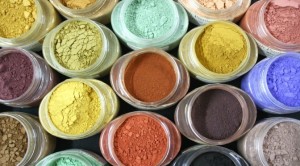
Dyes and pigments have evolved tremendously over the years and today their importance is not limited to lending color to various substrates. They have also become a vital constituent of biomedicine and biotechnology industry. Their journey has been a long one beginning with research into devising varied colors and forms that would act as colorants to plastics, textiles, inks and printing, paints and every possible aspect of our daily lives.
Yet, dyes and pigments are still quite often confused terms, with one being used in place of another.The main difference between the two lies in their solubility. Pigments are not soluble in the liquid in which they are mixed. Pigments have to be used as finely ground powders and mixed in a liquefied binder. On the other hand dye is a color imparting substance that is soluble in the liquid in which it is mixed. Pigments are organic and inorganic both of which are obtained naturally or produced synthetically. Some of the organic pigments produced synthetically are the azo-pigments which include the yellow, red and orange colour, the phthalocyanine which include green and blue range, quinacridone which include a lightfast violet-red pigment and so on. Inorganic naturally sourced pigments are the ochres, umbers, siennas and synthetic ones include cobalt blue, cadmium orange/red/yellow and titanium white. Lake pigments are actually dyes that do not possess the property of solubility for specific liquid thinners. Acid black and acid red are some examples of dyes.
In the context of pigments for paints the features of the paint like its tinting strength, light-fastness, transparency/opacity and colour depend upon the pigment type used in it. Let us see how each of the paint attribute is determined by the type of pigment used. As far as tinting goes, the quantity of pigment and the thinness of its grinding will determine the tinting strength of the paint. Greater the paint’s tinting strength longer will be its color conservation by mixing with white. The opacity or transparency of the pigment will be seen only in the absence of an opaque extender in the paint. This difference in the colored paint can be seen through an even layer thickness. Under the Color index, every pigment is allotted a pigment number besides its name. For example, PY35 refers to Cadmium yellow as PY stands for yellow pigments and the numeral refers to Cadmium.
The requirement for stringent regulatory fulfillments has impacted the paint formulations leading to their evolvement and development of new techniques that comply with the imposed regulatory demands. Pigments that are eco-friendly and less harmful to human health have come into existence. All said and done their role in the paint industry is undisputable in today’s times.
Just as certain pigments are still sourced from nature there are certain herbal extracts obtained from nature that occupy an important place in medicinal and food and beverage industry. Herbal extracts manufacturers have to comply with still stricter regulatory restrictions. And all the herbal extracts that are in the market today are of the highest standards possible!